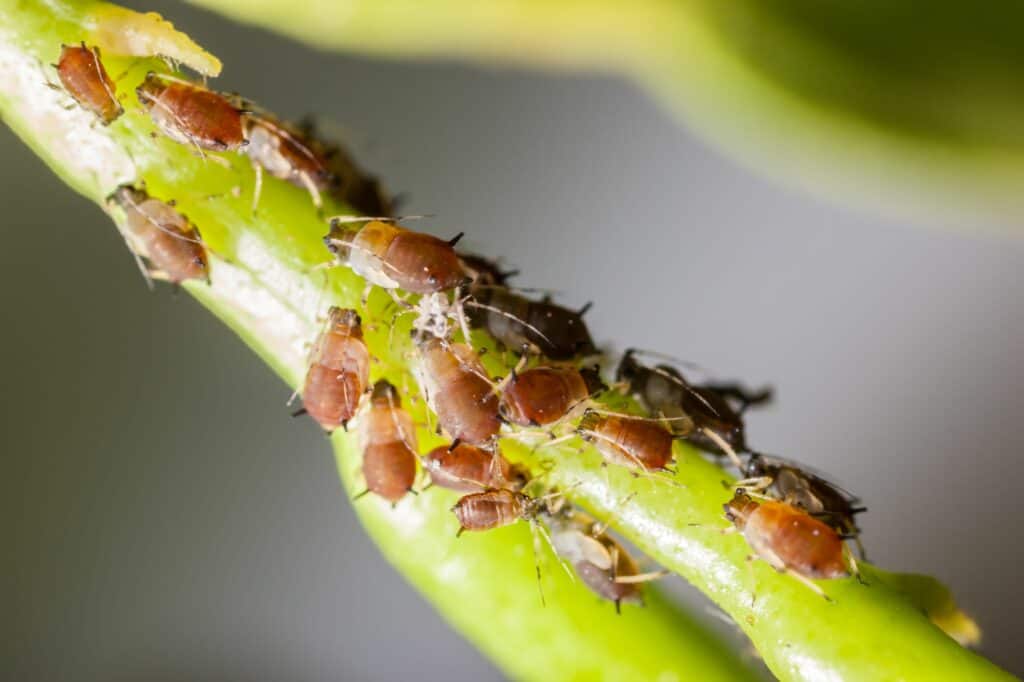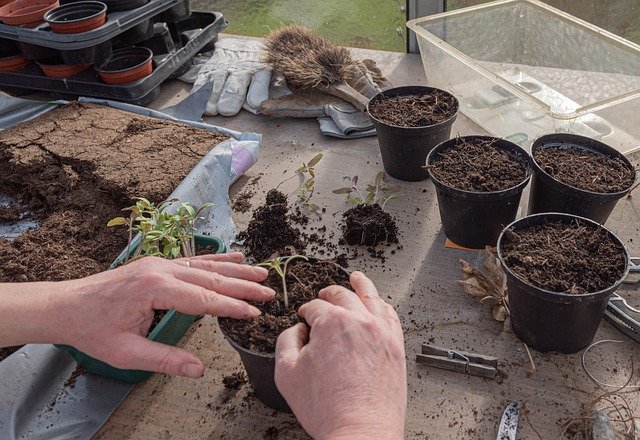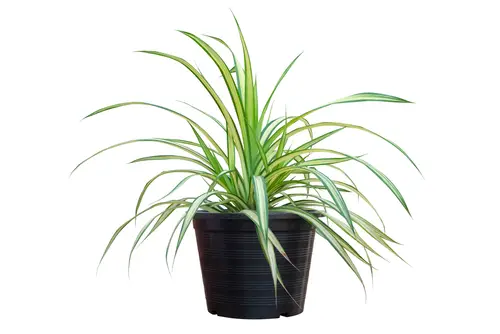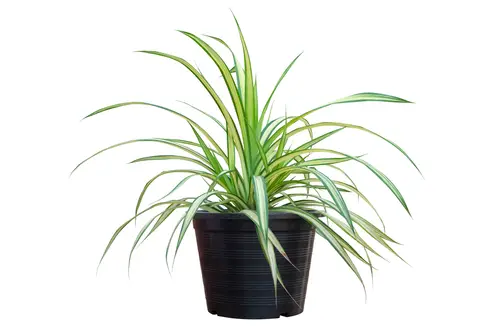Spider plants are a popular houseplant known for their ability to thrive in a variety of conditions. However, even the most resilient plants can experience issues, and one common problem with spider plants is drooping leaves.
Spider plant leaves drooping can be a sign of an underlying issue that needs to be addressed to keep the plant healthy.
Identifying the problem is the first step in addressing drooping spider plant leaves. The leaves may appear wilted or limp, and the plant may look generally unhealthy. Causes of drooping leaves can include overwatering, underwatering, improper lighting, and root problems.
Proper care is essential for preventing drooping leaves, and addressing the root cause of the issue is necessary for reviving a droopy spider plant.
In this article, we will explore the causes of drooping spider plant leaves and the role of proper care in preventing this issue. We will also discuss how to address root problems and revive a droopy spider plant. Additionally, we will provide tips for maintaining healthy spider plants and answer frequently asked questions.
Identifying the Problem
Check out these other related posts:
- ZZ Plant Stems Drooping
- Spider Plant Drooping After Repotting
- Snake Plant Leaves Curling and Drooping
Recognizing Drooping Leaves
Spider plants are known for their lush green foliage and ease of care, but sometimes their leaves can start to droop. This can be a sign of several different issues, so it’s important to identify the problem in order to address it properly.
Drooping leaves on a spider plant can be recognized by their limp and lifeless appearance. The leaves may also curl or twist, and the plant may look generally wilted. If you notice these signs, it’s important to take action to prevent further damage to the plant.
Common Spider Plant Problems

There are several common problems that can cause spider plant leaves to droop. These include:
- Lack of water: Spider plants need regular watering, and if they don’t get enough moisture, their leaves can start to droop. Make sure to water your spider plant regularly, but be careful not to overwater it, as this can also cause problems.
- Root rot: If the soil is too wet for too long, the roots of the spider plant can start to rot, which can cause the leaves to droop. If you suspect root rot, try repotting the plant in fresh, well-draining soil.
- Lack of light: Spider plants need bright, indirect light to thrive. If they don’t get enough light, their leaves can start to droop. Try moving your spider plant to a brighter location.
- Pests: Spider mites and other pests can also cause spider plant leaves to droop. If you notice any signs of pests, treat the plant with an appropriate insecticide.
- Over-fertilization: Too much fertilizer can also cause spider plant leaves to droop. Make sure to follow the instructions on your fertilizer carefully, and avoid over-fertilizing.
Spider Plant Leaves Drooping – 4 Common Problems
Spider plants are known for their hardiness and ability to thrive in different environments. However, sometimes their leaves can start to droop, which can be a sign of an underlying problem. In this section, we will discuss the common causes of drooping leaves in spider plants.
1. Overwatering and Underwatering
Overwatering and underwatering are the most common causes of drooping spider plant leaves. Spider plants like to be kept moist but not waterlogged. If the soil is too wet, the roots can become waterlogged and start to rot, which can lead to drooping leaves. On the other hand, if the soil is too dry, the leaves can also start to droop.
To avoid overwatering or underwatering, it is important to water your spider plant only when the top inch of soil is dry. Make sure that the pot has adequate drainage, and avoid letting the plant sit in standing water for too long.
2. Light and Temperature Issues
Spider plants prefer bright, indirect light. If they are exposed to too much direct sunlight, the leaves can start to wilt and droop. Additionally, spider plants are sensitive to temperature changes, and sudden drops in temperature can cause the leaves to droop.
To avoid light and temperature issues, place your spider plant in a bright, indirect location, and avoid exposing it to direct sunlight. Keep the plant away from drafts and sudden temperature changes.
3. Pests and Diseases

Spider plants can be susceptible to pests and diseases, such as spider mites and aphids. These pests can damage the leaves and cause them to droop. Additionally, diseases like root rot can also cause the leaves to droop.
To avoid pest and disease issues, inspect your spider plant regularly for signs of damage or infestation. If you notice any pests or signs of disease, take action immediately to prevent further damage.
4. Soil and Potting Issues
Spider plants need well-draining soil and a pot with adequate drainage holes. If the soil is compacted or the pot does not have enough drainage, the roots can become waterlogged and start to rot, which can lead to drooping leaves.
To avoid soil and potting issues, use a well-draining soil mix and make sure that your pot has adequate drainage holes. Avoid using pots without drainage holes or pots that are too small for your spider plant.
The Role of Proper Care
Proper care is essential for spider plants to thrive and avoid drooping. The following sub-sections discuss the key aspects of proper care for spider plants.
1. Watering Schedule
Watering is one of the most critical factors in spider plant care. Overwatering or underwatering can cause the leaves to droop. Spider plants prefer evenly moist soil, but they don’t like to sit in water. A good rule of thumb is to water the plant thoroughly when the top inch of soil feels dry to the touch.
It’s important to note that the watering schedule can vary depending on the environmental conditions. In general, spider plants require more frequent watering in warmer and drier conditions. Conversely, they need less water in cooler and more humid conditions.
2. Light and Heat Management
Spider plants prefer bright but indirect light. Direct sunlight can scorch the leaves and cause them to droop. If the plant is not getting enough light, the leaves may turn yellow and droop. A good location for a spider plant is near a window that receives bright but filtered light.
Heat is another factor to consider. Spider plants prefer temperatures between 60°F and 75°F. Temperatures above 90°F can cause the leaves to droop and wilt. It’s important to keep the plant away from heat sources such as radiators and air vents.
3. Nutrient Management

Spider plants don’t require a lot of fertilizer, but they do benefit from occasional feeding. A balanced, water-soluble fertilizer can be applied every two to four weeks during the growing season. Overfertilization can cause leaf tip burn, which can lead to drooping.
4. Humidity and Moisture Control
Spider plants prefer moderate to high humidity levels. Low humidity can cause the leaves to droop and brown at the tips. A humidifier can be used to increase the humidity levels around the plant. Alternatively, the plant can be misted regularly to provide additional moisture.
Moisture control is also important. Spider plants prefer well-draining soil that allows excess water to drain away. Rainwater or distilled water can be used to avoid the buildup of minerals and salts in the soil. A moisture meter can be used to monitor the soil moisture levels and prevent overwatering or underwatering.
Addressing Root Problems
Spider plants are known for their hardiness, but sometimes they can experience root problems that cause their leaves to droop. Addressing root problems is essential to revive a wilting spider plant. This section will discuss how to identify root rot and deal with root-bound plants.
Identifying Root Rot
Root rot is a fungal disease that affects the roots of plants, causing them to rot and decay. Overwatering and poor drainage are the main causes of root rot in spider plants. If the soil is constantly wet and the roots are not able to dry out, they can become infected with root rot.
To identify root rot, look for the following signs:
- Brown, mushy roots
- Foul smell
- Wilting leaves
- Yellowing leaves
If you suspect that your spider plant has root rot, remove it from its pot and inspect the roots. Healthy roots should be firm and white, while rotted roots will be brown and mushy. If the roots are severely infected, you may need to cut them off and repot the plant in fresh soil.
Dealing with Root-Bound Plants
Root-bound plants are those whose roots have grown too large for their container. If your spider plant is root-bound, its leaves may start to droop because the roots are not able to absorb enough water and nutrients.
To deal with a root-bound spider plant, follow these steps:
- Gently remove the plant from its pot.
- Inspect the roots for signs of overcrowding.
- If the roots are tightly packed, use a sharp knife to make a few vertical cuts in the root ball.
- Repot the plant in a larger container with fresh, well-draining soil.
Reviving a Droopy Spider Plant

Spider plants are popular houseplants known for their easy care and attractive foliage. However, sometimes spider plant leaves can start to droop, indicating that the plant is not getting the care it needs. In this section, we will discuss how to revive a droopy spider plant.
Repotting the Plant
If the spider plant is drooping due to being root-bound, it may be time to repot it. Repotting the plant will give it fresh soil and more room for its roots to grow. To repot a spider plant, follow these steps:
- Choose a pot that is one size larger than the current pot.
- Fill the new pot with fresh soil.
- Gently remove the spider plant from its current pot, being careful not to damage the roots.
- Place the spider plant in the new pot and fill in any gaps with soil.
- Water the plant thoroughly.
Treating Pests and Diseases
Spider plants can also droop due to pests or diseases. Some common pests that can affect spider plants include spider mites and mealybugs. To treat pests, follow these steps:
- Identify the pest.
- Use an insecticidal soap or neem oil to treat the plant.
- Repeat treatment as necessary.
Spider plants can also be affected by diseases such as root rot or leaf spot. To treat diseases, follow these steps:
- Identify the disease.
- Remove any affected leaves or stems.
- Treat the plant with a fungicide.
- Adjust the plant’s care routine to prevent the disease from returning.
Modifying Care Routine
If the spider plant is drooping due to improper care, modifying the care routine can help revive it. Here are some tips for caring for a spider plant:
- Water the plant when the top inch of soil is dry.
- Provide the plant with bright, indirect light.
- Avoid placing the plant in direct sunlight or in a drafty area.
- Fertilize the plant once a month during the growing season.
Additional Tips for Healthy Spider Plants
Choosing the Right Container
Choosing the right container is essential for the health of your spider plant. Spider plants prefer to be slightly pot-bound, so it’s best to choose a container that is only slightly larger than the root ball.
A container that is too large can lead to overwatering and root rot. It’s also important to choose a container with good drainage to prevent water from pooling at the bottom.
Understanding Spider Plant Varieties

Spider plants come in several different varieties, including the cholorophytum comosum and the white stripe. Each variety has its own unique characteristics and requirements.
For example, the white stripe variety prefers bright, indirect light, while the cholorophytum comosum can tolerate lower light levels. Understanding the specific needs of your spider plant variety can help you provide the best care possible.
Propagating Spider Plants
Propagating spider plants is a great way to increase your plant collection or share spider plant babies with friends. To propagate spider plants, simply remove the spider plant babies from the parent plant and plant them in their own container.
Spider plant babies can also be left attached to the parent plant until they have developed their own root system. Once the spider plant babies have developed their own roots, they can be removed and planted in their own container.
Final Thoughts
Spider plants are a low-maintenance plant that is easy to take care of. They are a durable and hardy plant that can thrive in various conditions. However, if you notice your spider plant’s leaves drooping, it is important to take action to revive it.
Proper care is essential for spider plants to thrive. Ensure that they are planted in well-draining soil and watered regularly. Overwatering can be just as harmful as underwatering, so it’s important to find a balance. Spider plants prefer bright, indirect sunlight and can tolerate low-light conditions.
If you notice your spider plant’s leaves drooping, it could be due to a variety of reasons, including lack of water, inadequate moisture, fertilizer burn, or container issues. By identifying the cause of the problem, you can take the appropriate action to revive your plant.
Overall, spider plants are an easy-care plant that can add a touch of greenery to any home or office space. With proper care, they can thrive for years to come.
Frequently Asked Questions
How do you fix a droopy spider plant?
There are several ways to fix a droopy spider plant. The first step is to identify the cause of the drooping. Overwatering is a common cause of drooping spider plant leaves. If this is the case, reduce watering and ensure proper drainage.
If the plant is in direct sunlight, move it to a shadier location. If the plant is not getting enough water, increase watering frequency. Spider plants can also benefit from a balanced fertilizer every two to four weeks during the growing season.
What does an overwatered spider plant look like?
An overwatered spider plant may have yellowing leaves, root rot, and drooping leaves. The soil may also have a sour smell. To fix an overwatered spider plant, reduce watering and ensure proper drainage. Allow the soil to dry out before watering again.
How do I know if my spider plant needs more or less water?
Spider plants prefer to be kept evenly moist, but not waterlogged. A good way to determine if a spider plant needs water is to stick a finger into the soil. If the top inch of soil feels dry, it’s time to water.
If the soil feels moist, wait a few days before checking again. Overwatered spider plants can have yellowing leaves, root rot, and drooping leaves, while underwatered spider plants can have dry, brown tips and wilting leaves.
How often should you water spider plants?
Spider plants should be watered when the top inch of soil feels dry. This can range from once a week to once every two weeks, depending on the environment and growing conditions. It’s important to not overwater spider plants, as this can lead to root rot and other issues.
How to save a dying spider plant?
To save a dying spider plant, identify the cause of the problem. Common issues include overwatering, underwatering, lack of light, and pests. Fix the issue by adjusting watering, providing more or less light, or treating pests.
Prune away any dead or dying leaves, and repot the plant if necessary. Spider plants can recover from stress and damage with proper care.
Spider plant leaves turning brown and falling off?
Spider plant leaves can turn brown and fall off for several reasons, including overwatering, underwatering, low humidity, or exposure to cold temperatures.
To fix the issue, adjust watering, increase humidity, and provide a warmer environment. Prune away any dead or dying leaves. Spider plants can also benefit from a balanced fertilizer every two to four weeks during the growing season.

Hey, I’m Lisa and I’ve been an avid gardener for over 30 years. I love writing, talking and living in the garden! Feel free to connect with me on my socials below


